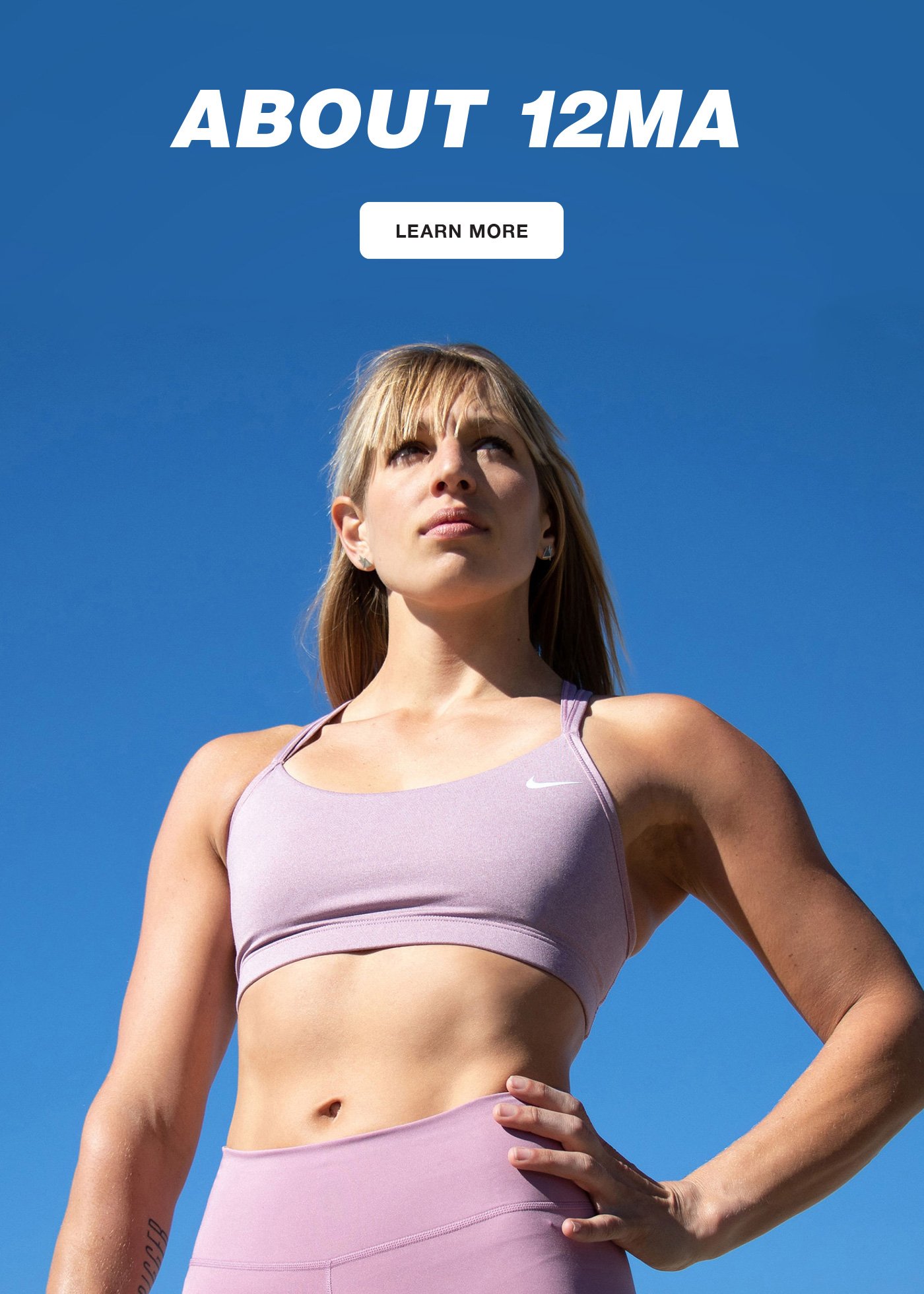I’ll never forget the first handstand I ever did.
I was in a CrossFit class, and the skill of the day was to practice handstand holds. I always like to pretend I’m tougher than I really feel, so when the coach told us to kick up into a handstand against the wall, I wasn’t going to back down, despite feeling like I’d swallowed a hundred butterflies.
I took a deep breath, threw my hands down on the ground about a foot from the wall, and kicked my legs up as hard as I could. My feet slammed loudly against the wall, followed soon by my butt, and I was wobbly and unsteady thanks to fairly weak shoulders and a non-engaged core.
But despite all that, I felt like a superhero.
I’ve been hooked on handstands ever since.
Embracing the journey
Since that very first handstand, there’s no question that I’ve made a lot of progress. Some might say I’m a little obsessed with handstands, but I just look at them as an endless challenge and something that will definitely help if I ever need to become a real superhero someday (hey, it could happen…).
I’m absolutely fascinated by the body’s ability to adapt and do things that by any normal logic should be impossible, and standing on your hands for any extended period of time is just one of those areas of fascination.
And although some people might say my handstands are amazing now, I’m no where near where I want to be. Yet it’s been a pretty amazing journey so far, and I’ve learned a lot of lessons along the way—lessons that I believe can probably help many of you frustrated in reaching your handstand goals.
One thing I want to make very clear is that I have no “natural gift” for handstands. I have long arms, zero gymnastics background, and have never had very good balance or coordination.
The only way I’ve been able to get to where I am today was by working really, really hard. There’s no doubt that it has been frustrating at times, and I’ve hit a lot of plateaus along the way. But it’s also been extremely gratifying, and I’m proud of how far I’ve come.
Here’s how my handstand journey has gone so far:
Step 1: Getting upside down
As I already mentioned, the very first step in my handstand journey was to simply get up the courage to go completely upside down.
And for any person with no gymnastics background, this first step is no small feat. That’s especially the case for tall people since the ground just seems so far away when you’re tall!
For a while, just getting upside down and holding it for a few seconds was enough of an accomplishment in itself. At that time, I had zero technique—my shoulders were completely collapsed, my core was loose, and my body was much more in a banana shape than a straight line as it should have been, but that was 100% OK to begin with.
That first step is really just about getting over the fear of being upside down—there’s no need to worry about too many details.
Estimated time of phase one: About one to two months
Step 2: Building strength
Once I got confident enough that I wasn’t going to slam down on my head the second I got up into a handstand, the next step was to build up strength.
Prior to doing my first handstands, I wasn’t exactly what you would call weak—by that time I’d been working as a personal trainer for a while and had already accomplished my first pull up.
But since my shoulders have always been a weakness of mine in the past, it didn’t take long at this stage after I’d kicked up into a handstand against the wall before I felt like I was going to collapse into my shoulders and crumple to the ground.
I spent quite a bit of time during this stage doing handstand push ups and holding handstands against the wall just to build up strength.
Once again, I had zero technique—I just knew I needed to get stronger if I was ever going to accomplish my goal of holding a freestanding handstand.
Estimated time of phase two: Approximately 6 months
Step 3: Trying for freestanding
At this stage, I was feeling much more confident being upside down and much stronger overall. But the second I tried to remove my handstand from the wall and take a shot at a freestanding handstand, everything fell apart.
I’d try and I’d try, but no matter what I did, I could not hold a handstand. Sure, I got to the point that if they timed it just right my family could take a photo of me in a semi-handstand and catch it before I cartwheeled over. But no matter what I did, I couldn’t hold it longer than a second or two in this stage.
This stage was undoubtedly the most frustrating point in my handstand journey so far—especially since by this point I was actually practicing quite a bit and just couldn’t understand why I wasn’t getting any better.
I nearly gave up my goal of doing a freestanding handstand altogether at this stage, and after a while went extended periods of times without practicing at all due to my frustration at my lack of progress.
Estimated time: About 9-12 months (mainly due to lack of consistency)
Step 4: Learning technique
In the previous stage, I’d been spending a lot of time on my hands, but I had no real strategy to it—and I also had no real understanding of what it takes to be able to hold a longer handstand.
Here’s what I mean…
Previously, I’d always thought that once you got up into a handstand, you should be able to find a perfect position and just hold it there, with no movement whatsoever.
This would make me feel so frustrated when I’d kick up into a pretty decent handstand and hold it for a second, then topple over. I just couldn’t understand why I wasn’t able to stay in that position.
Since then, I’ve learned that it takes a considerable amount of movement through your shoulders, hips, and fingers (especially your fingers!) to maintain a handstand.
Before, I’d been practicing handstands mainly on grass and on my extra fluffy carpet in my living room in order to take away some of the fear of falling.
Since then, I’ve learned that in order to get a handstand down, you mainly need to practice on hard, flat ground (such as hardwood floors, gym floors, or concrete) in order to build an awareness of your body and an understanding of how much work your fingers need to do to hold you up in a handstand.
No, that doesn’t mean you’ll never be able to get into a handstand on the beach or in your parents’ front yard, but most of your practice should be on hard surfaces that your fingers can feel and easily grip.
Previously, I’d been kicking up into a handstand against a wall, which early on makes most people rely too much on the wall and get used to too much of a banana-shaped handstand (stomach out, feet too far back, etc.).
Later, I learned that walking up the wall so that your chest is against the wall and your hands as close to the wall as possible is a better way to mimic a freestanding handstand.
Before, I thought handstands were all about shoulder strength and that the rest of the body had nothing to do with your ability to stay upright.
Since then, I’ve learned that being able to maintain a handstand is really all about holding the entire body in a line, requiring your whole body to work, not just your shoulders. For example, holding your core tight as well as pointing your toes is an incredibly important part of a solid handstand. Not that your shoulders aren’t important, though—you should always focus on pushing up through your shoulders (think about pushing your shoulders away from the ground) in order to avoid collapsing into yourself.
This stage was all about being smarter with my handstand practice and beginning to build awareness in my body.
Estimated time: Approximately 12 months
Step 5: Seeking out expert knowledge
In this last (and current) stage, my main focus has been on building awareness and becoming smarter overall with my handstand practice. And though I did a lot better just practicing on my own, there came a certain point where I knew if I wanted to continue improving, I needed to consult an expert.
I’ve always loved to learn new skills and use HIIT workouts to keep me in shape so I can attempt new sports and activities.
In the past, I’ve done things like triathlons, learned to box, practiced Krav Maga, and even took swimming lessons (since I had somehow resorted back to doggy paddling over the years).
So trying gymnastics and then working with an acrobatics coach seemed only like the natural thing to do to keep building new skills and stay feeling challenged.
When it came to learning handstands with my coach, I certainly didn’t go into it with no ability (at that point I could already hold a handstand against a wall for a minute plus, so strength wasn’t a huge concern), but I soon realized I had a lot to learn.
I’ve been working with my coach for about six months now, and have been focusing on several things, including building up endurance (I’d like to be able to hold a three minute handstand), increasing body awareness, and continuing to find the right movements in my fingers, shoulders, and hips when I’m upside down.
I’ve also been working on more advanced movements like being able to do splits, straddles, and tucks while upside down.
And while there’s no question that I’ve made a lot of progress, some days are better than others. But I’ll get there!
Estimated time: About 6 months
Key lessons learned
If you’re looking to improve your handstands and want to know how to get started, here are some of the most helpful things I’ve learned over my handstand journey so far:
- There is no perfect position when holding a handstand. You need to constantly (but gently) move your fingers, shoulders and hips in order to stay upright. It takes a while for you to even be able to start to understand this, so just be patient with yourself.
- Walking your feet up the wall when you’re just starting out is a much better way to practice handstands than simply kicking up against the wall.
- When practicing freestanding handstands, always practice on a flat, hard surface such as hardwood floors or concrete.
- A good handstand is all about your line—make sure to push up through your shoulders, tighten your core, and point your toes in order to make sure your entire body is working hard.
And most of all, practice, practice, practice!
Building a good handstand takes time—unless you’re already really, really strong and coordinated and have previous experience in some sort of gymnastics-like sport or advanced yoga, you’re not going to accomplish it after just a couple of weeks (or months) practicing.
As you can see, I’ve spent years working on improving my handstands. And even now, working on movements such as straddles, splits, and tucks in a handstand have been incredibly humbling for me and often make me want to pull my hair out from frustration.
But more importantly, my handstand practice has also been incredibly rewarding and has just really reinforced to me that no matter what your background, no matter what your current fitness level, you really can do anything you put your mind to.
I never in a million years thought that at the age of 28, I’d finally be able to do a decent handstand. But I’ve worked really hard at it, and never gave up, even when I hit roadblocks (and I hit a lot of them).
And if you put that much work into something, you will get there too. I believe in you.



Awesome article! I had been wondering how long it took you, and how you had started. My arms are long too, my strength is so little that I am sometimes surprised how my body actually doesn’t just flop over – which is now better mainly due to YOUR inspiration to get sweaty at least 12 minutes a few times a week, and I can do handstands against the wall, but free … yeah, just enough for a photo 🙂 I will try the walking up the wall, and focus on engaging the whole body more! Thanks Krista!
Thanks Krista. I am 5’10 and def NOT a gymnast but have put it on my “list” to master a handstand and you have been the inspiration for that…..100% of the people i’m around, even those at my gym could care less about doing a handstand, but we know it represents so much more than just balancing on our hands. You are awesome – and as I walk my feet up the wall or work on shoulder pushups, i’ll think of you. and i’ll keep going.
Its definitely awesome to see such long term hard work paying off! It’s inspiring. When you say ‘walking your feet up the wall’, are you facing the wall or facing away?
I’m very new to trying out handstands! Thanks for the informative tips!
I can hold a handstand for a long time against the wall but still struggling doing it all the wall. Recently I had one moment that I held a free hand stand for 5 seconds (kicking off the wall) and it was the most steady handstand ever if I wasn’t having a freak out moment that I finally found it I could have hold much longer. Since then I have not been able to find it again.. Love your article. I will keep trying.
Thanks a lot for sharing this. I started about 1 year ago (I am 59yrs now) and still no free standing handstand. But your testimony and all your other articles on this are extremely helpful and keep me going. Never give up! That’s the spirit.
Can you post a video of what it looks like to “walk your feet up the wall”? I don’t get it.